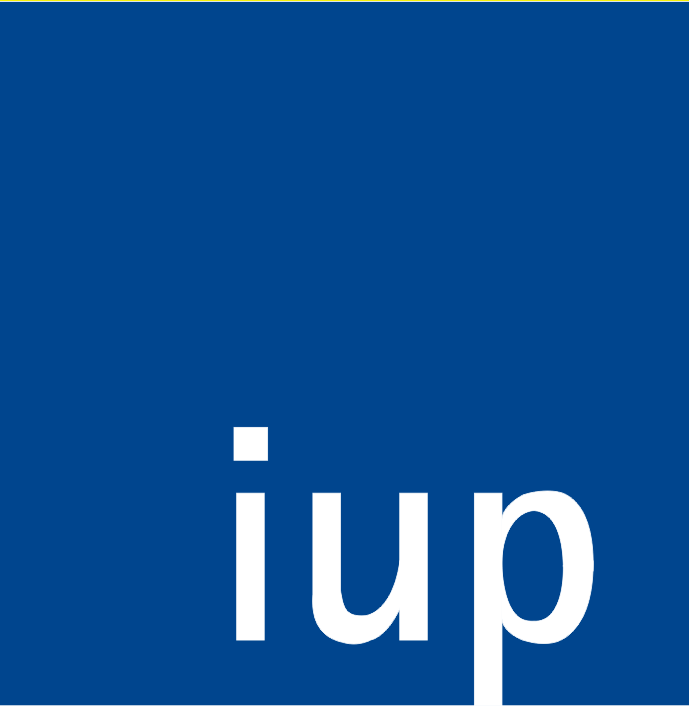Showing results 1 - 20 out of 111
2023
Grobe, A. (2023). Etablierung von Torfmoosen und Begleitvegetation bei Torfmooskultivierung auf geringmächtigem Schwarztorf. [Doctoral thesis, Leibniz University Hannover]. Leibniz Universität Hannover. https://doi.org/10.15488/15684
Grobe, A., & Rode, M. (2023). Factors influencing the establishment of vascular plants at Sphagnum cultivation sites. Wetlands ecology and management, 31(4), 449–465. https://doi.org/10.1007/s11273-023-09927-2
2021
Kurze, S., Bilton, M. C., Álvarez-Cansino, L., Bangerter, S., Prasse, R., Tielbörger, K., & Engelbrecht, B. M. J. (2021). Evaluating grazing response strategies in winter annuals: A multi-trait approach. Journal of Ecology, 109(8), 3074-3086. https://doi.org/10.1111/1365-2745.13721
Zitzmann, F., & Rode, M. (2021). Short-Rotation Coppice Managed According to Ecological Guidelines: What Are the Benefits for Phytodiversity? FORESTS, 12(5), Article 646. https://doi.org/10.3390/f12050646
2020
Kotzen, B., Branquinho, C., & Prasse, R. (2020). Does the exotic equal pollution? Landscape methods for solving the dilemma of using native versus non-native plant species in drylands. Land Degradation and Development, 31(18), 2925-2935. https://doi.org/10.1002/ldr.3650
Prasse, R. (2020). Statement on Flora and Fauna as Integral Components of Locality in Urban Areas. In F. Wang, & M. Prominski (Eds.), Water-Related Urbanization and Locality: Protecting, Planning and Designing Urban Water Environments in a Sustainable Way (pp. 365-375). Springer Singapore. https://doi.org/10.1007/978-981-15-3507-9_19
Ribeiro, A. P. (2020). Bringing to light a new energy path: biomass residues as a contribution to a sustainable and inclusive energy source in Brazil. [Doctoral thesis, Leibniz University Hannover]. Leibniz Universität Hannover. https://doi.org/10.15488/9943
2019
Bucharova, A., Bossdorf, O., Hölzel, N., Kollmann, J., Prasse, R., & Durka, W. (2019). Mix and match: regional admixture provenancing strikes a balance among different seed-sourcing strategies for ecological restoration. Conservation genetics, 20, 7-17. https://doi.org/10.1007/s10592-018-1067-6
Ribeiro, A. P., & Rode, M. (2019). Residual biomass energy potential: perspectives in a peripheral region in Brazil. Clean Technologies and Environmental Policy, 21(4), 733-744. https://doi.org/10.1007/s10098-019-01675-3
Schlattmann, A., & Rode, M. (2019). Spatial potential for paludicultures to reduce agricultural greenhouse gas emissions: an analytic tool. Mires and Peat, 25(Special Volume), 1-14. Article 03. https://doi.org/10.19189/MaP.2017.OMB.324
2018
Matthies, S. (2018). Species richness in urban green spaces: Relevant aspects for nature conservation. [Doctoral thesis, Leibniz University Hannover]. Leibniz Universität Hannover. https://doi.org/10.15488/3093
Rode, M. (2018). Von alten Bäumen, Moosen und Flechten. Artenschutz als Interesse in und an Kulturdenkmalen. In Denkmalpflege als kulturelle Praxis. Zwischen Wirklichkeit und Anspruch. : Dokumentation VDL-Jahrestagung, Oldenburg 2017. Arbeitshefte zur Denkmalpflege in Niedersachsen 48 (pp. 200-209). Niedersächsisches Landesamt für Denkmalpflege.
Wix, N., Rode, M., & Reich, M. (2018). Auswirkungen von Blühstreifen auf die Biodiversität und ihre Eignung als produktionsintegrierte Kompensationsmaßnahme (PIK) bei der Biogasproduktion. In Blühstreifen - Biodiversität und produktionsintegrierte Kompensation (pp. 7-46). (Umwelt und Raum; Vol. 9). https://doi.org/10.15488/3683
Wix, N., Rode, M., & Reich, M. (Eds.) (2018). Blühstreifen - Biodiversität und produktionsintegrierte Kompensation. (Umwelt und Raum; Vol. 9). https://doi.org/10.15488/3683
2017
Bredemeier, B., Schmehl, M., Rode, M., Geldermann, J., & von Haaren, C. (2017). Biodiversität und Landschaftsbild in der Ökobilanzierung von Biogasanlagen. (1. Aufl. ed.) (Umwelt und Raum; Vol. 8). Selbstverlag des Instituts für Umweltplanung. https://doi.org/10.15488/3862
Karpenstein-Machan, M., von Haaren, C., Bauböck, R., Rode, M., & Saathoff, W. (2017). Sind die Landwirte bereit, empfohlene Maßnahmen zum integrativen Energiepflanzenbau umzusetzen? In Bioenergie im Spannungsfeld: Wege zu einer nachhaltigen Bioenergieversorgung (pp. 91-92). Universitätsverlag Göttingen. https://doi.org/10.17875/gup2017-1042
Karpenstein-Machan, M., von Haaren, C., Bauböck, R., Rode, M., & Saathoff, W. (2017). Welche Instrumente können zur Bewertung eines nachhaltigen Biomasseanbaus herangezogen werden? In Bioenergie im Spannungsfeld: Wege zu einer nachhaltigen Bioenergieversorgung (pp. 93-94). Universitätsverlag Göttingen. https://doi.org/10.17875/gup2017-1042
Karpenstein-Machan, M., von Haaren, C., Bauböck, R., Rode, M., & Saathoff, W. (2017). Welche Umweltwirkungen werden durch die Etablierung eines integrativen Energiepflanzenbaus erwartet und welche Auswirkungen hat die Umstellung der Betriebe auf die Ökonomie? In Bioenergie im Spannungsfeld: Wege zu einer nachhaltigen Bioenergieversorgung (pp. 88-90). Universitätsverlag Göttingen. https://doi.org/10.17875/gup2017-1042
Karpenstein-Machan, M., von Haaren, C., Bauböck, R., Rode, M., & Saathoff, W. (2017). Wie können ökologisch sensible landwirtschaftliche Flächen identifiziert werden? Welche Auswirkungen hat die Nutzung dieser Flächen? Wie kann die Produktion und Nutzung von Bioenergie positive Wirkungen auf Klima - , Wasser - , Boden und Artenschutz entfalten? In Bioenergie im Spannungsfeld: Wege zu einer nachhaltigen Bioenergieversorgung (pp. 82-87). Universitätsverlag Göttingen. https://doi.org/10.17875/gup2017-1042
Matthies, S. A., Rüter, S., Schaarschmidt, F., & Prasse, R. (2017). Determinants of species richness within and across taxonomic groups in urban green spaces. Urban ecosystems, 20, 897-909. https://doi.org/10.1007/s11252-017-0642-9


